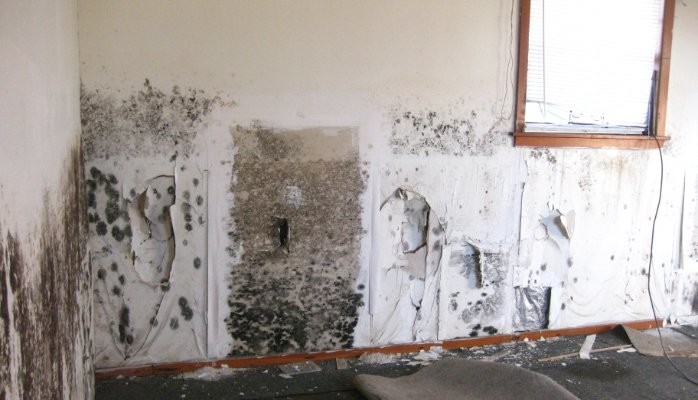
Table of Contents
Mold growth is a persistent issue in many homes, causing not only unsightly blemishes but also potential health problems. In this comprehensive guide, we will delve into the common causes of mold growth in homes and provide actionable steps to prevent it. With the right knowledge and preventive measures, you can ensure a mold-free and healthy living environment for you and your family.
Understanding Mold Growth
What is Mold?
Mold is a type of fungus that thrives in damp and humid environments. It reproduces by releasing spores, which can be harmful if inhaled.
The Impact of Mold
Mold can cause various health issues, including allergies, respiratory problems, and skin irritations. Additionally, it can damage the structural integrity of your home.
Common Causes of Mold Growth
Excess Moisture
Excess moisture in your home, whether from leaks, high humidity, or poor ventilation, is one of the primary culprits behind mold growth. Mold spores need moisture to flourish.
Poor Ventilation
Inadequate airflow and ventilation can trap moisture indoors, providing an ideal environment for mold to thrive. Areas like bathrooms and basements are particularly vulnerable.
Leaky Roofs and Plumbing
Roof leaks and plumbing issues can introduce water into your home, leading to mold infestations. These issues often go unnoticed until mold has already spread.
Preventing Mold Growth
Control Indoor Humidity
Invest in a dehumidifier to maintain optimal indoor humidity levels, typically between 30-50%. This prevents conditions favorable for mold growth.
Regular Home Inspections
Frequent inspections of your home can help detect early signs of water damage or leaks. Promptly addressing these issues can prevent mold from taking hold.
Proper Ventilation
Ensure good ventilation in areas prone to moisture, like bathrooms and kitchens. Use exhaust fans and keep windows open when possible to promote airflow.
Maintenance and Repairs
Roof Maintenance
Regularly inspect and maintain your roof to prevent leaks. Timely repairs can save you from extensive damage and mold issues.
Plumbing Checks
Keep an eye on your plumbing system and promptly address any leaks or issues. Preventing water intrusion is a key step in mold prevention.
Mold-Resistant Products
Consider using mold-resistant materials and paints in areas prone to dampness, such as bathrooms and basements. These can help inhibit mold growth.
Mold-Prone Areas in the Home
Bathrooms
Bathrooms are a common breeding ground for mold due to high humidity and frequent water use. Regular cleaning and good ventilation are essential here.
Basements
Basements tend to be damp, dark, and poorly ventilated, making them a perfect environment for mold. Waterproofing and dehumidification can help.
Kitchens
Kitchens are prone to moisture from cooking and washing dishes. Ensure that exhaust fans are used, and leaks are fixed promptly.
Mold Removal and Remediation
DIY vs. Professional Mold Removal
Small-scale mold problems can often be tackled by homeowners, but for extensive infestations, it’s best to hire a professional mold removal service.
Safety Precautions
If you decide to tackle mold removal yourself, be sure to wear protective gear, such as gloves and a mask, and work in a well-ventilated area.
Cleaning and Disposal
Use appropriate cleaning agents to scrub away mold, and ensure proper disposal of contaminated materials. Avoid spreading spores during the process.
Landscaping and Exterior Mold Prevention
Proper Drainage
Maintain good drainage around your home’s foundation to prevent water from seeping into basements and crawl spaces.
Landscaping Choices
Choose mold-resistant plants and shrubs for your garden, and keep them at a distance from your home’s exterior.
Final Thoughts on Mold Prevention
Consistency is Key
Preventing mold growth is an ongoing effort. Regular maintenance and vigilance are vital in ensuring your home remains mold-free.
Health and Home Protection
Mold prevention not only safeguards your property but also the health of your family. The peace of mind that comes with a mold-free home is invaluable.
Conclusion
Mold prevention in your home is not just about keeping it aesthetically pleasing; it’s about creating a safe and healthy living environment. By understanding the common causes of mold growth and taking proactive steps to prevent it, you can significantly reduce the risk of infestations. Remember that consistency, regular inspections, and prompt maintenance are the keys to a mold-free home. Protect your property and your family’s well-being by following these guidelines.
You can click here to read more about mold growth and prevention and you can also contact us to request an inspection




 PuroClean Emergency Restoration Specialists
PuroClean Emergency Restoration Specialists